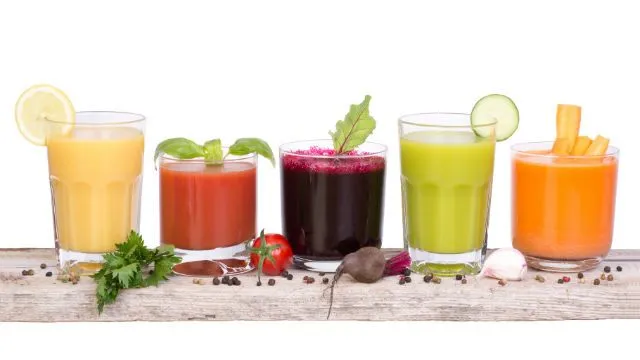
- Share on Facebook496
- Share on Pinterest
- Share on Twitter
Though practiced religiously by health gurus for decades, juicing is now more popular than ever as more and more people are learning about its numerous health benefits.
Proponents of juicing claim that these sometimes strange looking concoctions can treat everything from dry skin to chronic disease.
As with most health trends, manufacturers have caught on to the hype and begun mass producing so-called “healthy” juices that now line store shelves. However, many of these contain incredibly large quantities of sugar thanks primarily to the fruits used. Similarly, many individuals who choose to juice at home make the same mistake, opting for high-sugar ingredients over more healthy options like green leafy vegetables.
While it’s true that fruits are healthy, they still contain sugar. When eaten whole, the fiber content of a fruit helps balance out the effects natural sugars have on blood glucose. Yet once juiced, the fiber is removed and all that remains is the super sweet juice teeming with sugar.
For diabetics looking to improve their health through juicing, masking the stronger flavors of vegetable juice can be somewhat challenging. Yet, those struggling with insulin resistance need not choke down unpalatable juices, as there are several ingredients that can add flavor without adding extra sugar or calories. Here are some juicing tips and delicious recipes suitable for anyone looking to control their blood sugar levels while still enjoying their juices.
Juicing tips and tricks
- Use high-water content vegetables as a base, such as cucumbers and celery. These will not only add more volume, but help dilute more potent juices.
- Include fruits and vegetables high in manganese, as this mineral helps reduce insulin resistance. These include parsley, carrots, cabbage, collard greens, endive, beet greens, broccoli and spinach.
- Avoid the highest-sugar fruits, such as pineapple and mango. These juices can contain up to eight teaspoons of sugar each.
- Both asparagus and green beans contain several compounds that help stabilize blood sugar.
- To sweeten juices, add lower-sugar fruits such as green apple and kiwi. Berries are also a good option, particularly blueberries which are high in manganese.
- Select herbs and spices for added flavor. Cinnamon is proven to help stabilize blood sugar when consumed consistently, and other flavorful ingredients to try include parsley, ginger, cilantro and fennel.
Diabetic-friendly recipes
An Alkalizing Juice
- 2 stalks organic celery
- 1 organic cucumber
- 1 organic green apple
- 1 organic carrot
- 1 cup organic spinach
Tip: Spinach provides a mild flavor. Try the juice without adding the carrot to keep sugar levels lower. If necessary, add in a small carrot for a sweeter taste.
 A Veggie Juice With a Twist
A Veggie Juice With a Twist
- 2 stalks organic celery
- 1 medium organic red pepper
- ½ bunch organic cilantro
- 1 organic carrot
- ½ organic cucumber
- ½ organic fennel bulb
- 1 cup organic spinach
- 1 lime (squeeze into finished product)
Tip: a clove of garlic works well in this juice.
A B6 Bounty
- 10-12 organic brussels sprouts
- 2 cups organic string beans
- 1 organic cucumber
- 1 peeled organic lemon
Tip: Brussels sprouts and string beans are excellent source of B6, a vitamin that aids in blood sugar stabilization.
A Heart Healthy Juice
- 6 sprigs organic watercress
- 1 handful organic parsley
- 2 organic tomatoes
- 2 organic green apples
Tip: Apples, watercress and tomatoes all contain compounds that are effective at lowering LDL cholesterol levels.
An Energizing Juice
- 4 leaves organic lacinato kale
- 1 organic cucumber
- 3 cups organic spinach
- 5 stalks organic celery
- ½ bunch organic parsley
Tip: The greens in this juice provide an energy boost, yet if it’s not sweet enough, add either a small organic green apple or an organic beet for flavor.
-The Alternative Daily
- Share on Facebook496
- Share on Pinterest
- Share on Twitter

